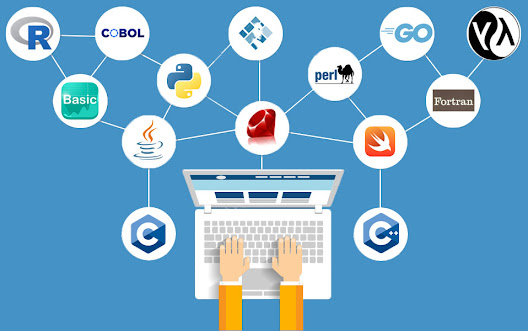Programming languages serve as the foundation of software development, enabling developers to communicate with computers and create a wide range of applications. These languages vary in their syntax, features, and use cases, making it essential for aspiring programmers to understand their differences. In this article, we'll provide a comprehensive introduction to programming languages, exploring their significance, classification, and popular examples.
The Significance of Programming Languages:
Programming languages are akin to human languages in that they allow developers to express their ideas and instructions to computers. They provide a bridge between human-readable code and machine-executable instructions, enabling developers to create everything from simple scripts to complex applications. Each programming language is designed with specific goals in mind, whether it's optimizing performance, enhancing developer productivity, or facilitating certain types of applications.
Classification of Programming Languages:
Programming languages can be classified into several categories based on their characteristics and intended use cases:
Low-Level Languages: These languages, such as Assembly language, provide a direct representation of machine code and are closely tied to the hardware. They offer precise control over hardware resources but are challenging to write and maintain.
High-Level Languages: These languages, like Python, Java, and C++, abstract away many hardware details and provide more user-friendly syntax. They focus on enhancing developer productivity and are generally easier to read and write.
Procedural Languages: Procedural languages like C and Pascal focus on sequences of procedures or functions. They are excellent for structured programming and task-oriented development.
Object-Oriented Languages: Languages like Java, C#, and Python promote the concept of objects, encapsulating data and behavior together. They facilitate modular and reusable code through classes and inheritance.
Functional Languages: Functional languages like Haskell and Lisp treat computation as the evaluation of mathematical functions. They emphasize immutability and declarative programming.
Scripting Languages: Scripting languages like JavaScript and Ruby are often used for quick prototyping, web development, and automating tasks.
Domain-Specific Languages (DSLs): These languages are tailored to specific application domains. SQL (for databases) and HTML/CSS (for web development) are examples of DSLs.
Popular Programming Languages:
Numerous programming languages have left their mark on the software development landscape. Here are a few noteworthy examples:
Python: Known for its simplicity and versatility, Python is used in web development, data analysis, machine learning, and more.
Java: Renowned for its "write once, run anywhere" capability, Java is widely used in enterprise applications, Android app development, and more.
JavaScript: Essential for front-end web development, JavaScript enables dynamic and interactive web experiences.
C++: A powerful language often used in systems programming, game development, and performance-critical applications.
Ruby: Valued for its elegant syntax and developer-friendly features, Ruby is commonly used in web development, especially with the Ruby on Rails framework.
Swift: Developed by Apple, Swift is the language of choice for iOS, macOS, watchOS, and tvOS app development.
Conclusion:
Programming languages are the cornerstone of software development, offering developers the tools they need to transform concepts into functioning applications. Understanding the classification and characteristics of different programming languages is crucial for selecting the right language for a specific project or task. Whether you're just starting your programming journey or looking to expand your language repertoire, a solid foundation in programming languages is a key asset in the ever-evolving world of software development.


